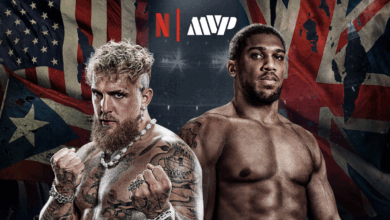The richest athletes in combat sports
Combat sports are not only spectacular fights and centuries-old traditions, but also a huge industry that encompasses millions of fans around the world. MMA, boxing, Kyokushin, Muay Thai, and other disciplines fill arenas and attract the attention of viewers, sponsors, and even gambling platforms, including gambling sites not on GamStop, which actively collaborate with famous fighters. Thanks to high fight fees, multi-million dollar sponsorship contracts, and constant media exposure, athletes in this field are able to earn entire fortunes.
Sources of income for martial artists
The main source of income for fighters is payment for participating in matches. The amounts can vary from a few thousand dollars for newcomers to tens of millions for world-class stars. The size of the fee depends on the athlete’s status, the level of the tournament, the number of spectators, and pay-per-view (PPV) sales. In addition to a fixed fee, winners often receive additional bonuses that significantly increase their total income.
Famous fighters become attractive to major brands — sportswear, energy drinks, car companies, watch brands, and even the gambling industry. Such deals can bring in millions of dollars annually, even if the athlete is not actively fighting. In some cases, advertising contracts exceed the amount of fight fees.
Some top athletes appear in movies, TV shows, and documentaries. This not only increases their income but also expands their fan base. For example, participating in popular TV shows or filming in Hollywood action movies can bring a fighter millions in additional income and secure new advertising contracts.
Many martial arts stars invest their earnings in their own projects: they open chains of gyms, launch sportswear and equipment brands, and produce energy drinks or dietary supplements. This approach allows them to preserve and multiply their capital even after their sports careers are over.
Ranking of the richest athletes in martial arts
In the world of martial arts, there are stars whose names are known even to those who have never watched a fight. They have not only gained worldwide fame thanks to their sporting achievements, but have also managed to turn their success in the ring or octagon into huge fortunes.
- Conor McGregor — a charismatic Irish MMA fighter and former UFC champion in two weight classes. He made history as the first fighter to hold two UFC belts at the same time. His net worth exceeds $200 million, but most of this money was earned outside of the ring. His main sources of income are sales of his own whiskey brand, Proper No. Twelve, lucrative advertising contracts with sportswear and watch manufacturers, and even partnerships with gambling sites not on GamStop. McGregor is an example of an athlete who has turned his image into a business empire.
- Floyd Mayweather, undefeated American boxer with a record of 50-0. A five-time world champion in various weight classes, he earned the nickname “Money” thanks to his ability to earn record fees. His net worth exceeds $450 million, and his key sources of income include huge fight payouts, his own promotional company Mayweather Promotions, real estate investments, and gambling.
- Saul “Canelo” Alvarez — Mexican boxer, world champion in four weight classes and one of the highest-grossing athletes of all time. His net worth is estimated at $180 million. In addition to huge fight fees, Canelo has signed a contract with DAZN worth hundreds of millions of dollars, is developing his own brand of energy drinks, and collaborates with world-renowned companies.
- Mike Tyson, legendary American boxer and the youngest heavyweight world champion in history. Despite financial problems in the past, Tyson managed to rebuild his fortune, which is now estimated at over $20 million. He earns money selling cannabis products under the Tyson 2.0 brand, appearing in films and shows, staging exhibition fights, and actively developing his merchandise.
- Georges St-Pierre, a Canadian fighter considered one of the most decorated in MMA history. A two-time UFC welterweight and middleweight champion, he has 26 wins in his professional career. His net worth is estimated at $30 million, with income coming not only from fight fees but also from a contract with Reebok, appearances in Marvel films, and businesses in the fitness and nutritional supplement industries.
These athletes have proven that combining athletic talent, media presence, and a business mindset can lead to financial independence and influence the entire combat sports industry.
How they invest and preserve their wealth
Real estate investments
For many athletes, real estate is the “gold standard” for preserving capital. It provides a stable passive income and increases in value over time. Floyd Mayweather is known for owning several luxury mansions in Las Vegas and Miami, as well as investment properties in New York City. Conor McGregor buys luxury apartments in Dubai and Spain, which he rents out to wealthy tourists or resells at a substantial profit. Saul “Canelo” Alvarez also invests in real estate in Mexico and the US, often buying commercial properties to rent out for business purposes.
Launching their own brands
Branding is one of the most profitable tools for martial arts stars to increase their capital. Athletes use their name and reputation to create products that instantly gain the trust of their audience. Conor McGregor launched the whiskey brand Proper No. Twelve, which became a global hit, and sold a significant stake in the brand for tens of millions of dollars. Mike Tyson launched the cannabis brand Tyson 2.0, which brings in millions in revenue every year. Georges St-Pierre created a line of nutritional supplements and fitness programs, which he actively promotes through social media and partner clubs.
Participation in business projects
In addition to creating their own brands, fighters often invest in existing or new commercial projects. Floyd Mayweather is an investor in several restaurants, boxing gyms, and gambling establishments. Canelo Alvarez owns a business in the energy drink industry and is a partner in sports companies. Georges St-Pierre is involved in the development of fitness networks, advises startups in the health and sports industry, and is a co-investor in technology projects related to physical activity monitoring.
The influence of wealthy athletes on the popularity of martial arts
Today’s martial arts stars, who have already achieved financial success, actively use social media to expand their fan base. Instagram, TikTok, YouTube, and even their own reality shows allow them to showcase their lives outside the ring — training, leisure, charity projects, family moments. This creates an image of a “man of the people” that inspires the audience, even if they are not fans of fighting. This approach attracts young people, who usually get acquainted with sports through viral content and the personal stories of athletes, rather than just through sports broadcasts.
When rich and popular fighters announce their matches, it automatically causes a stir. Their fights often become global events that are actively promoted through advertising, interviews, and social media. The high fees paid to such athletes are often justified by significant revenues from ticket sales and pay-per-view broadcasts, as audiences are willing to pay to see their idols perform. As a result, even those who were not previously interested in martial arts may purchase a broadcast simply because they like the athlete.
The success of wealthy fighters is changing the rules of the game across the industry. When stars earn multi-million dollar fees, it raises the bar of expectation for other athletes. Young fighters begin to see the sport not only as a way to realize their potential, but also as a path to financial independence. In addition, the high status of successful athletes (brand contracts, movie appearances, honorary titles) contributes to martial arts being perceived not only as a sport but also as an element of global pop culture. This encourages new market players, from promoters to sponsors, to invest more in the industry.
Risks and financial mistakes made by athletes
Many martial arts stars who suddenly earn large incomes face the risk of mismanaging their finances. Investments in dubious projects, risky start-ups or unsuccessful real estate can quickly eat up a significant portion of their wealth. Stories of such losses are common: for example, Mike Tyson lost hundreds of millions of dollars due to excessive spending and unsuccessful business projects.
In addition, fraud and financial machinations are also a common risk. Athletes who entrust their funds to third parties or companies without sufficient control risk losing not only their profits but also part of their earned capital. To minimize risks, modern fighters follow several rules:
- Diversify investments; do not invest all funds in one project or asset.
- Be wise with savings and control expenses; avoid impulsive purchases and an excessive lifestyle that does not correspond to long-term financial goals.
- Plan income and reserves, create a “safety cushion” in case of injury, career end, or unexpected expenses.
Following these rules helps athletes preserve their capital and ensure financial stability even after their active careers end.
Financial advisors and professional managers have become an integral part of a successful athlete’s team. They help:
- Analyze investment opportunities and risks.
- Create long-term financial strategies.
- Control income from sponsorship contracts, media activity, and brands.
For example, Conor McGregor and Floyd Mayweather actively work with financial advisors who help them wisely allocate income from fights, business, and advertising. Thanks to this approach, they avoid many mistakes typical of athletes with no experience in managing large sums of money.
Future trends in martial arts
The growing role of media activity and blogging for fighters’ earnings
Today, a fighter’s financial success often depends not only on their performance in the ring or octagon, but also on their ability to actively engage with their audience. Social media has become a key promotional tool: YouTube channels allow fighters to post daily vlogs, show their training and preparation for fights, while TikTok and Instagram are becoming platforms for short videos, memes, and interactive communication with fans. This approach has several advantages:
- Increased income outside the ring, fighters earn money from advertising, affiliate programs, streaming, and merchandise sales.
- Expanded fan base, new generations of fans can follow athletes on social media, even if they don’t follow their fights.
- Opportunity for personal branding: a strong media presence allows athletes to become recognizable outside of sports.
For example, Conor McGregor and Jake Paul actively use social media to promote their fights and products, which significantly increases their income from advertising and PPV broadcasts.
The emergence of new disciplines and tournaments with high prize pools
The combat sports industry is constantly evolving and looking for formats that attract viewers. The following are emerging:
- Hybrid tournaments combining different styles (e.g., boxing and MMA).
- International tournaments with record prize pools, attracting athletes from different countries and disciplines.
- Experimental fight formats, including electronic integrations, VR viewing, and special show performances.
This encourages athletes to improve their skills, master new styles, and put on spectacular fights. For spectators, such events are more interesting and unpredictable, and for organizers, they are commercially profitable.
Greater integration of fighters into show business
Modern fighters are increasingly going beyond the boundaries of sport, becoming participants in shows, advertising campaigns, films, and music projects. This career expansion offers several advantages:
- Maintaining popularity after the end of their careers, even after retirement, fighters remain recognizable and attractive to brands.
- New sources of income: participation in films, TV series, shows, and even musical collaborations allows fighters to diversify their financial streams.
- Expanded influence on society: through the media and show business, fighters become cultural icons, influencing the popularization of martial arts among a wide audience.
Examples include Conor McGregor, who appears in commercials and actively promotes his own products, and Mike Tyson, who has become the subject of documentaries and shows and is developing his own brand in the music and entertainment industry.
Conclusion
The modern martial arts industry is closely linked to the financial success of its stars. Names such as Conor McGregor, Floyd Mayweather, Saul “Canelo” Alvarez, Mike Tyson, and Georges St-Pierre have become not only symbols of athletic prowess, but also media brands that influence the popularity of MMA, boxing, and other disciplines around the world. Their successes demonstrate that financial results today depend not only on victories in the ring or octagon, but also on the ability to run a business effectively, work with the media, engage fans through social networks, and create personal brands.
The popularity of athletes and the income from fights stimulate the development of the industry: tournament prize funds are increasing, sponsors are paying more attention, and new tournament and show formats are emerging. Thanks to this, young fighters have the opportunity not only to prove themselves at the sporting level, but also to create their own businesses and media images.




